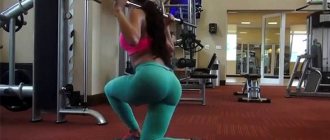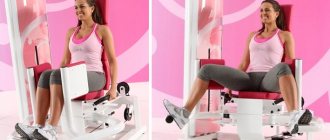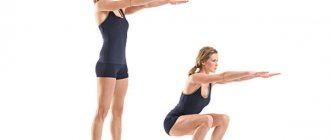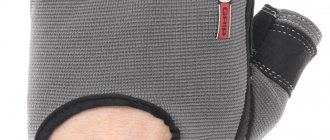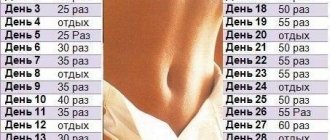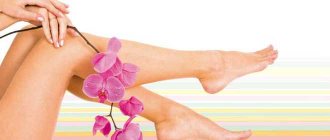Effective lunges for the buttocks
Many people believe that this is impossible to do, or if there is such a possibility, then only by training on simulators in a special room. But it's expensive? - this is the opinion of many, and they don’t even realize that by devoting a few minutes a day to this area, which needs to be pumped up by doing the right exercises, namely lunges for the buttocks, you can achieve tangible results in just a few weeks.
Exactly weeks - you shouldn’t think that any exercise, even if performed every day and pumping up any muscle group, can lead to a beautiful, pumped-up figure in a few days. This is long and hard work and you need to approach it with great patience and responsibility, and then within a month you can wear tight shorts and walk down the street, causing the admiration of men and the envy of other women.
How to achieve a beautiful buttock shape at home?
A special set of exercises has been developed to pump up the buttocks, which can be done at home without the use of special equipment. But more effective lunges for the buttocks, according to experienced trainers with many years of experience in conducting and developing systems and complexes, claim that over time, adding a certain weight to the legs or arms makes pumping faster. If it is not possible to purchase special leg or hand dumbbells, you can use available materials - the simplest of them are plastic bottles with water or sand.
View this post on Instagram
Is it necessary to do a squat to pump up your buttocks? ⠀ Squats are a great exercise for developing the lower body, but the problem is that this movement involves the quadriceps the most. Moving your pelvis back or, especially, sitting lower will not really help in shifting the emphasis from your legs to your buttocks. Therefore, if you do a lot of squats, you will most likely build up your butt, but your legs will still dominate. ⠀ And in order for the main load to go directly to the butt, I would advise you to perform other movements. The best exercises for the buttocks in my opinion are lunges, glute bridges and deadlifts. Lunges are good because when performing them you need to maintain balance so as not to fall to the right or left. And the buttocks, in addition to moving the leg back, have the function of stabilizing the hip. Therefore, when lunging, the buttocks perform two functions at once, thereby receiving more tension. The gluteal bridge allows you to give a peak load with full contraction of the buttocks. The deadlift makes it possible to “fold” (lean your hips toward your stomach), thereby stretching the gluteal muscles more strongly and increasing the range of motion in which the butt works. ⠀ As for isolated abductions and leg extensions, they can also be added to the workout. But I wouldn't count on them too much. #Lena_training
A post shared by Elena Khimich (@elena_himich) on Dec 18, 2020 at 9:41am PST
Do not forget that the effectiveness of these exercises, like any other exercises affecting different muscle groups in women, requires more time than in men. This is caused by the physiology and capabilities of the body in these two species of the human race. Men can do several exercises and within a short period of time visible results are observed. For girls it takes twice as long. Since ancient times, women have been the “keepers of the hearth,” and men have been getting food and for this they need muscles. But how can you make only a few types of shapes attractive, and not lead yourself to “pumping up” your muscles? Using forward lunges, the technique of which must be carried out correctly, you can make the female body shape even more graceful and attractive.
How to do the exercises correctly?
It should be borne in mind that exercises using lunges can be different, since different combinations, different leg positions, step levels, etc. have different effects on different muscle tissues. Let’s be more specific: if you do wide lunges with more movement of the legs forward and deeper squats, then this exercise will focus on the buttocks, shorter ones will lead to pumping of the hips. The most important thing when doing lunge exercises at home is to do them correctly in order to achieve any results. Many athletes claim that when the muscles get used to power loads, then the pumping area stops hurting after two workouts, but experienced professionals can argue with this. If the muscles stop hurting, then you need to increase the frequency of hikes and the amount of exercise.
https://www.instagram.com/p/4hMqlOJ6cG/?utm_source=ig_web_copy_link
You don’t need to do a lot right away and then barely crawl to the chair. By increasing the rate evenly, you can achieve the required results much faster. But it is worth remembering that if you stop at a certain number of approaches, this will also not be more effective and increasing the norm is correct.
Why are these exercises effective for these muscle tissues?
Using these exercises to successfully develop the buttocks and some parts of the thighs, you can also develop beautiful leg contours. The movement performed has a lot of structure and uses many different muscles. The quadriceps and gluteal muscles work primarily, and the soleus muscle tissues are responsible for the movements. The femoral biceps and calf muscles stabilize the movement, but also receive a small share of the load:
- Press the abdomen;
- dorsal extensors;
- when using dumbbells - muscles in the arms;
- small muscle tissue of the legs.
Top 7 effective execution options (video)
So, the technique of performing lunges for the buttocks without weights is under the weight of your own body and using weights: a barbell or dumbbells.
Attention! The number of approaches and the number of exercises performed is selected individually for each person. (On average – three sets of five exercises).
Classic
- Place your feet parallel, hip-width apart. Keep your back straight and ensure correct posture. Then we bend our back a little at the lower back and slightly bend our knees. We do not tilt our body, we keep our head straight.
- We take a step - we push one leg forward, we extend the other leg and lean on the toe. We transfer the load to the leg located in front. We bend it and smoothly sit down.
- Lean on the foot of your leg pointed forward and rise up smoothly, without jerking. We return to the original position using the muscles of the leg extended forward. We use the hind leg as a support without loading it.
- The next stage is to change the leg placed forward and lunge.
See also: A set of 7 best leg exercises.
Watch the video for more details:
Important! The leg you extended bends at a right angle. The back leg should be straight. We perform the exercise until the knee of the straightened leg is close to the floor. In this case, we do not touch the floor - in this case, the gluteal muscles will receive the intended load.
Jumping
We stand in the classic starting position. We jump with force, and during the jump we change legs.
Exercise is very effective at burning calories. Recommended for those who want to not only strengthen their gluteal muscles, but also lose weight. This exercise is not recommended for beginners , as it is quite difficult to perform and there is a risk of getting a tendon strain.
While walking
When walking with lunges, choose the widest but most comfortable step width for you.
Maintain your balance and don't lean to the side. All movements are carried out by tensing the muscles - walking inertia should not be used. Do you know about the unique exercise “Walking on the buttocks” from Professor Neumyvakin? You can find out about 7 useful properties of this practice on our website.
With dumbbells
Lunges with dumbbells for the buttocks for girls are done with alternating legs. Available in different versions:
- We hold dumbbells on our hands located along the body.
- We hold dumbbells on our shoulders. Next, we perform using the classical technique.
With a barbell
Performed similarly to a lunge with dumbbells. The exercise promotes excellent development of the gluteal muscles. We take a step forward, the leg in front smoothly bends at the knee until a right angle . Tight muscles in the back and abdomen help keep the body in a balanced position.
When doing exercises with weights, we control our posture and look forward.
With support footrest
We place the leg that is behind on the chair. Next, we perform the exercises as in previous cases. This lunge increases the load on the gluteal muscles and tightens the butt.
Lateral
- Place your feet slightly wider than your shoulders.
- We take a deep step to the side with one foot. The distance between your legs should be greater than shoulder width. We begin to sit down, smoothly bending our leg at the knee.
- At the end of the exercise, the thigh of the supporting leg should be parallel to the floor, and the other leg should be fully straightened.
- Change legs and repeat the exercise.
Rectus femoris muscle
It is part of the quadriceps, but deserves special attention because of its importance in this set of exercises. It originates from the upper part of the acetabulum. Its small parts go down to the kneecap and connect to other quadriceps muscles. Together they are responsible for moving the leg and straightening it at the knee. But this muscle is at a disadvantage if the leg is bent at the hip joint.
https://www.instagram.com/p/BqC9iHDjzTk/?utm_source=ig_web_copy_link
The main muscles of the biceps, located in the back of the thigh, have two branches - long and short. The first originates in the area of the back of the hip joint. In a sitting position, the entire torso rests on them. The short part originates from the outer thigh. Both parts merge, forming one whole muscle core and, with the help of a tendon, are attached to the tibia and fibula.
Semimembranous and gluteus maximus muscles
The first part has a base in the inner back of the thigh and passes into a tendon that has a dense base, especially in the area of the patella. From its name it follows that it consists half of a membrane, and the other part is muscle tissue. Crossing the knee, it moves towards the fibula and ends there. The second muscle is thicker and larger in appearance, not only in the legs, but throughout the entire body. It originates from the pelvic bone and, moving towards the hip joint, attaches to the femur at the back of it.
Execution technique
The effect will be noticeable and all the time spent in sports will not be spent in vain; you need to adhere to the correct execution of the chosen complex, and draw up a table. If you lunge forward, then you need to watch the knee of the leg that moves forward. The knee should move smoothly and take the desired angle. It should remain level with the foot, and not go forward or go back.
Positive side and contraindications
Lateral exercises, as well as forward and backward exercises, combine to form a unique program for losing weight and strengthening the human body, providing the following positive effects:
- effective training of muscles in the thighs, abdomen and buttocks;
- burning extra calories;
- acceleration of metabolic processes;
- formation of strong muscle fibers.
Reviews from those who regularly use such exercises at home and in fitness centers confirm that an integrated approach to regularly performing these exercises helps to obtain elastic buttocks and sculpted legs.
Please note: The main contraindications for performing such exercises include: high blood pressure, injuries to the knee joints and muscles, as well as untreated pathologies. Before starting these exercises, you should first consult with an experienced and qualified specialist.
Every girl who regularly performs these wonderful exercises in compliance with all recommendations can get strong muscles, slender legs, and round buttocks. But to achieve such results you will have to try a little and make every effort, along with the right diet.
Starting movement
The most common and considered basic are standard lunges for the buttocks in the classic version. To do this, you need to stand straight, place your feet shoulder-width apart. If the complex will be carried out with additional load in the hands (dumbbells, water bottles), then keep your arms along the body, holding the load - take a step forward and place the knee of the leg in front at an angle of 90 degrees.
When performing this movement, you do not need to lean on it, distributing the load throughout the body. The back leg can also bend and lower towards the floor, but should not touch it. Return to the starting position and lunge on the other leg. The most important thing when making a movement is to focus on the heel, not the toe. Correct lunges combined with breathing exercises will bring more benefits if you hold your breath. As you move your legs forward, you should inhale, and when you return to the starting position, exhale.
